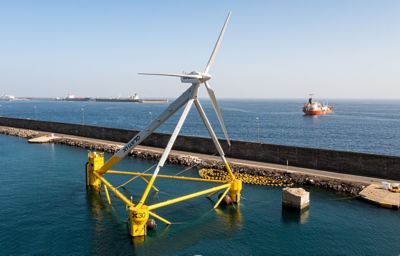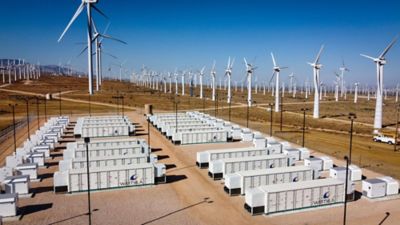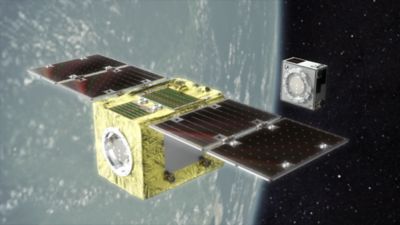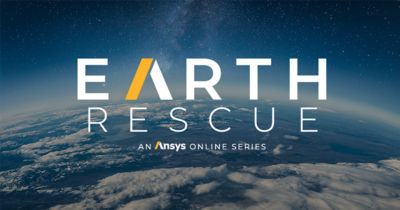-
-
学生向け無料ソフトウェアにアクセス
Ansysは次世代の技術者を支援します
学生は、世界クラスのシミュレーションソフトウェアに無料でアクセスできます。
-
今すぐAnsysに接続!
未来をデザインする
Ansysに接続して、シミュレーションが次のブレークスルーにどのように貢献できるかを確認してください。
国および地域
無料トライアル
製品およびサービス
リソースとトレーニング
当社について
Back
製品およびサービス
ANSYS BLOG
April 20, 2022
Earth Day 2022: Simulation Helps the World Go Green
Through overpopulation, industrialization, and overconsumption, we’ve reached a tipping point that requires us, through reflection and innovation, to achieve a more sustainable environment for future generations. Green awareness has led to a lot of conversation about sustainability, including what it is and how to achieve it.
“We are at a crossroads. The decisions we make now can secure a livable future,” says Intergovernmental Panel on Climate Change (IPCC) Chair Hoesung Lee in a recent press release. The IPCC is the United Nations body for assessing the science related to climate change. “We have the tools and know-how required to limit warming.”
Using technology to help mitigate the impact of climate change is critical to sustainable development. If you’re new to the term sustainable development, it is described as “development that meets the needs of the present without compromising the ability of future generations to meet their own needs.” For corporations, sustainable development is essentially a balancing act performed among societal, environmental, cultural, and economic factors to develop innovative products and solutions that improve our interactions with the environment and our overall quality of life.
In celebration of Earth Day this week, we’d like to take a moment to share how simulation is enabling our customers to take bold technological leaps in sustainable development and solve some of the world’s biggest environmental challenges.
Simulation Leads to Lower Emissions
The “go-to” solutions for many of us when we think about reducing CO2 emissions are electric vehicle (EV) and autonomous vehicle (AV) technologies. According to the U.S. Environmental Protection Agency (EPA), greenhouse gas (GHG) emissions from transportation account for about 29% of total United States GHG emissions, making the transportation sector the largest contributor of emissions in the country. Fossil fuel emissions are extremely high on the environmental grievance list, which is one reason why automotive manufacturers are dedicating significant product development efforts to ensure EVs and AVs dominate the market in the near future.
The BMW Group is an example of an automotive company charging toward sustainability, leveraging digital engineering to solve EV challenges in battery design, powertrain efficiency, and robust electronics architecture to meet government mandates and CO2 emissions guidelines on a global scale. Using Ansys Sherlock, for example, BMW can predict the life of EV semiconductor components supporting the power systems responsible for maintaining optimum voltage levels and current flows to the battery.
Discover how BMW is using simulation to accelerate reliability testing of EV electronics components to achieve its climate goals.

Image courtesy of Synhelion
EV and AV development has certainly taken a giant step in the right direction, yet there are still challenges with the technology — including the electricity used to recharge EV batteries, which is often derived from the burning of fossil fuels. One startup is changing this narrative by turning sunlight into fuel to help move the world to net-zero. With the help of the Ansys Startup Program, Synhelion is using Ansys’ multiphysics simulation software and high-temperature solar heat to convert CO2 and water into synthetic fuels that are efficient, scalable, economically viable, and environmentally friendly.
Read all about how Synhelion is using Ansys computational fluid dynamics (CFD) and finite element analysis (FEA) simulation software to develop, test, and validate the complex technologies needed to produce sustainable solar fuels.
Sometimes finding a viable fossil fuel alternative can be as “simple” as splitting a water molecule. Based out of the United Kingdom, NanoSUN, an award-winning engineering company and Ansys Startup Program member, is applying Ansys Fluent CFD simulation software to safely and efficiently produce scalable green hydrogen fueling solutions. NanoSUN primarily uses the software to track and monitor potential leaks within their hydrogen refueling stations to prevent fires.
Simulation Helps Turn the Tide of Energy Production

The X30 Floater: X1 Wind’s Unique Floating Wind Turbine Design
Another focus of sustainable development is energy harvesting. Many of us are familiar with on- and off-shore wind turbines that convert wind into energy. Ansys Startup Program member X1 Wind is preparing to take offshore wind turbine design to a new level with the X30 Floater, a floating wind turbine design. Check out the single-point mooring system and downwind configuration that enables the floating wind turbine to passively pivot in the direction of the wind and capture more energy.
Orbital is also making waves in alternative energy with tidal turbines. The company’s flagship solution, the Q2, is a 74-meter-long turbine that is moored to the seabed by an anchoring system. When positioned in a tidal stream, the turbine uses large rotors with 10-meter blades to go with the flow and capture energy in a 600-square-meter area. You can get more specifics about the technology and the recent launch in “Making Waves in Sustainable Energy,” which was the cover story of a recent Ansys Advantage magazine issue.
Of course, most energy harvesting technologies are largely dependent on cooperation from the environment. When the sun stops shining, the wind stops blowing, or the water stops flowing, Wärtsilä Energy’s GEMS Digital Energy Platform regulates delivery and storage of energy to keep the power going. The Helsinki-based company uses a combination of Ansys tools to optimize their energy storage systems — all of which you can read about in our new blog.

Image courtesy of Wärtsilä
Simulation Supports Space Cleanup
Beyond the clutter we’ve created on Earth, there’s a growing amount of junk floating in space from past satellite launches. This debris is polluting our space environment and crowding out functioning satellite services that have become an important part of modern life. Astroscale is a company on a mission to clean up space and grow the space economy in the process with innovative, scalable solutions for active debris removal using simulation. Ansys Systems Tool Kit (STK) enables the team to run accurate simulations that analyze conditions in space, including what is in Earth’s orbits. Read on for more insight into the relationship between Ansys and Astroscale as they work together to achieve sustainability in space.

The End-of-Life Services by Astroscale (ELSA) program is a spacecraft retrieval service for satellite operators.
Simulation is Key to Sustainable Product Development
All of the innovators mentioned here identify one common element to their success: simulation. Optimization is a big benefit of simulation, and a key to sustainable product development and production. Starting from the ground up, corporations use simulation to optimize factory designs to make them smaller, more ergonomic, and energy efficient. Within these simulated environments, it’s then possible to examine production flows to find workflow efficiencies that can reduce waste, including the amount of raw material, equipment, and employees needed for production.
Through design and material identification, simulation also plays an outsized role in the development of sustainable packaging that’s lightweight, recyclable, or completely biodegradable. All of the data coming out of these interactions can be shared among key stakeholders to streamline manufacturing on a broader scale and enable sustainability across entire supply chains.
To learn more about the innovators who are leveraging technological advances and partner ecosystems to rapidly accelerate toward a more sustainable future, watch our Earth Rescue online docuseries.
